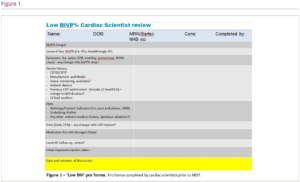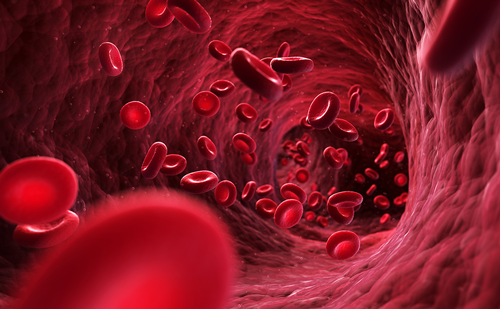Introduction: Cardiac resynchronisation therapy (CRT) has proven to improve left ventricular function, symptoms and quality of life in patients with symptomatic heart failure. Its effectiveness is largely dependent on the percentage of biventricular pacing (BiVp%). This can be reduced by a number of factors such as atrial and ventricular dysrhythmias and device programming. Barts Health NHS Trust has set up a service where patients with low BiVp% can be discussed with a cardiac scientist and a consultant cardiologist.
Methods: Any patient with a BiVp% of ≤97 can be referred by cardiac physiologists from the device clinic. A pro forma was completed to include the patient’s past medical history, cause of the drop in BiVp%, patient symptoms, CRT device details and current medications (Figure 1). Any outstanding patients were discussed at a weekly meeting with an outcome documented and actioned.
Results: Between June 2020 and July 2021, a total of 121 patients (76% male; age at referral 75 ± 10.6 years) were referred. Overall, 95 patients had a CRT-D (79%) and ischaemic heart disease was the most common underlying aetiology (63 patients, 53%). The mean BiVp% was 81 ± 10.7%, with the most common cause of reduced BiVp% being premature ventricular complexes (88 patients, 72%). A total of 50 patients (43%) were New York Heart Association class II at the time of referral, with shortness of breath being the most common symptom (62 patients, 52%).
Conclusion: It is feasible to set-up an MDT-style service where patients with identified low biventricular pacing can be discussed and a clear outcome actioned to support cardiac scientists with the managements of this patient group.








